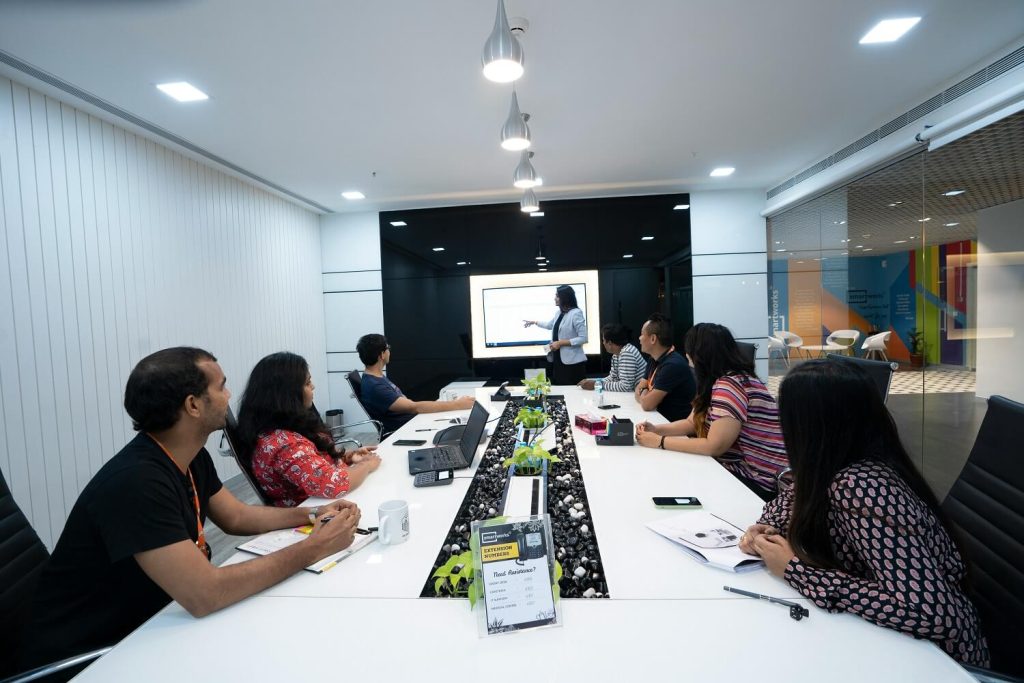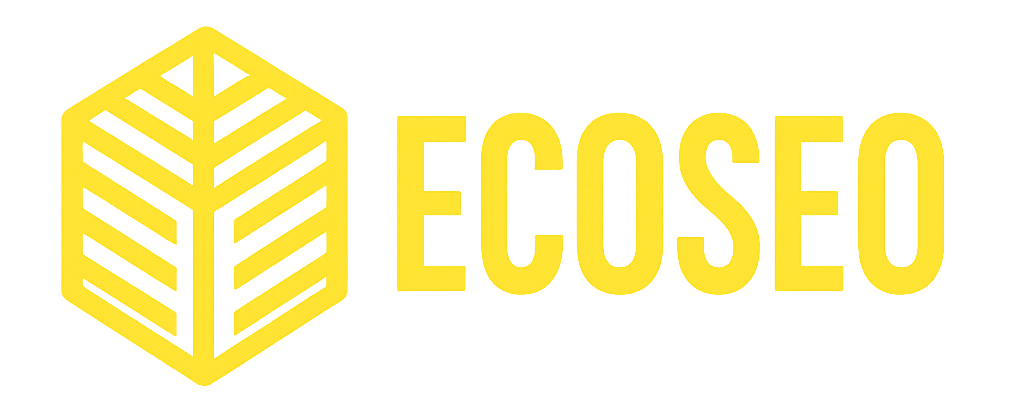Most businesses reach a point where they ask the same question: “Is SEO really worth the investment?”
It’s not an unreasonable doubt. SEO doesn’t come with instant gratification. Unlike paid ads, there’s no quick surge of clicks the moment you flip the switch. But when done right, SEO compounds over time — driving organic traffic, qualified leads and sustainable revenue growth.
At EcoSEO we’ve seen both sides of the coin. A client once came to us drowning in irrelevant traffic. Their site ranked for broad, high volume terms that looked good in a report but brought almost zero paying customers.
After we restructured their strategy, optimized for buyer intent keywords and cleaned up technical errors they saw a 560% increase in qualified leads in under a year. The ROI wasn’t just in the rankings — it was in revenue, retention and long term business growth.
That’s the reality many business owners overlook: rankings don’t pay the bills. ROI does.

Why ROI in SEO Matters More Than Rankings
Most agencies still brag about vanity metrics like “we ranked you #1 for [keyword].” But the real question is: does that ranking grow your business? Here are eight reasons ROI is a stronger success measure than raw rankings.
1. Rankings Don’t Guarantee Clicks
According to Sistrix, the first position in Google captures about 28.5% of clicks. But context matters. If the keyword isn’t relevant to your buyers, even position #1 won’t deliver revenue. ROI keeps the focus on the business outcome, not just the search result.
2. Traffic Quality Beats Traffic Volume
Ranking for a broad keyword like “plumbing” may bring in thousands of visitors. But if you’re a Cape Town based plumber, most of that traffic will bounce. ROI prioritises targeted keywords that attract local, purchase ready customers instead of window shoppers.
3. ROI Connects SEO to Revenue
Executives don’t care about keyword charts; they care about growth. ROI bridges the gap between SEO actions and financial performance. By tying organic traffic to conversions you prove the direct impact on the bottom line.
4. Rankings Fluctuate Daily
Search results are dynamic. A keyword you own today could slip tomorrow due to an algorithm update. ROI takes a long term view, showing sustained business value even if individual rankings shift. You can read more about SEO agencies and how they stay ahead of the algorithm updates.

5. ROI Reflects Customer Lifetime Value (LTV)
SEO isn’t just about the first sale. A single organic lead could become a customer worth thousands over several years. By calculating ROI you account for customer lifetime value instead of short term wins.
6. ROI Measures Multiple Channels Working Together
Strong SEO enhances paid campaigns, social media and brand credibility. For example, organic visibility builds trust, making users more likely to click your Google Ads. ROI captures the full business benefit across channels.
7. Rankings Don’t Show Cost Efficiency
You could spend a fortune ranking for a competitive keyword that barely converts. ROI exposes wasted effort by weighing revenue against costs. It forces smarter allocation of resources.
8. ROI Proves SEO’s Compounding Effect
Unlike paid ads that stop the moment you pause, SEO builds momentum. Content, backlinks and site authority keep working for you long after the initial investment. ROI shows this compounding value over time.
Do you need more info – Read about what you can expect from an SEO company when you sign up.

Breaking Down ROI in SEO
SEO return on investment isn’t as abstract as it sounds. It’s a simple formula:
ROI = (Revenue from SEO – Cost of SEO) ÷ Cost of SEO
But the challenge is in measuring the right inputs. Too often businesses only look at traffic and rankings. To get a true picture, you need to track the metrics that matter.
- Organic Traffic Growth – Are more qualified visitors finding you?
- Conversions and Leads – Are those visitors becoming customers or inquiries?
- Customer Acquisition Cost (CAC) – How much does it cost to secure one new customer via SEO?
- Customer Lifetime Value (LTV) – How much revenue does a customer generate over their entire relationship with you?
- Attribution Across Channels – Did SEO assist conversions that closed via email, ads or sales reps?
By focusing on these performance indicators you connect SEO activity to business outcomes. This turns SEO from a “marketing expense” into a profit center.
ROI compounds beyond rankings. It becomes a measurable driver of business growth.
Case Study: How Bareskin Grew with EcoSEO’s SEO Strategy
We worked with Bareskin, a laser hair removal brand, who had a great product but wasn’t getting enough visibility online. In a competitive beauty and skincare space, their organic search presence was minimal, making it hard to stand out and drive consistent sales.
Here’s what we did:
- Keyword Strategy Overhaul – We focused on commercial intent keywords in the laser hair removal space, so Bareskin ranked for terms buyers were searching when ready to buy.
- Technical SEO Fixes – We cleaned up the website’s technical setup, site speed, crawlability and indexing so search engines could properly rank core product pages.
- Content Development – We created SEO-focused product descriptions and supporting content that spoke to customer pain points and purchase intent.
- Link Building with Authority – We secured placements on health, beauty and lifestyle websites to build authority for Bareskin and drive referral traffic and organic rankings.
The results?
- Massive growth in organic visibility in the first year.
- Page one rankings for high value keywords like “laser hair removal machine” and “at home hair removal device”.
- Increased conversions from organic search, reducing reliance on paid ads.
- Stronger brand presence in the competitive eCommerce beauty space.
The takeaway:
When SEO is done right, it doesn’t just bring traffic – it brings in buyers. For Bareskin, SEO became the lever that drove their online growth and helped them scale while keeping acquisition costs under control.

Expert Insights: What Industry Leaders Say About SEO ROI
SEO’s value isn’t just theory. Industry reports and experts consistently highlight the long term ROI of organic search.
Marketing Report found SEO drives 1,000% more traffic than organic social media. But more importantly, leads from SEO close at a higher rate because they start with user intent.
- Moz says SEO is unique compared to paid advertising: the compounding benefits of organic content and backlinks deliver returns for years after the initial investment.
- Studies consistently show that organic traffic from SEO has higher conversion rates than paid traffic from PPC. One recent analysis found an average SEO conversion rate of 14.6%, compared to 1.7% for paid search.
- Case studies of businesses getting up to 12x ROI from well structured SEO campaigns.
Rand Fishkin, co-founder of Moz, puts it simply: “Rankings are a means, not an end. The real question is does your search traffic help you achieve your business goals.”
These stats back up what we see at EcoSEO every day: the value of SEO is measured not in keyword charts but in leads, revenue and brand equity.
Calculating Your SEO ROI Step by Step
Want to know the real financial impact of SEO? You need a clear process. Here’s a simple framework we use with clients:
Step 1: Define Clear Goals
What are you measuring? Leads, e-commerce sales, brand awareness or customer retention?
Step 2: Establish a Baseline
Measure your organic traffic, conversion rates and revenue before SEO work starts.
Step 3: Track Traffic and Conversions
Use Google Analytics 4, Google Search Console or SEMrush to monitor organic sessions and conversions.
Step 4: Assign Monetary Value
Put a number on your conversions. For example:
- A lead is worth R1,500 if 1 in 10 converts to a R15,000 client.
- An e-commerce purchase has a direct average order value.
Step 5: Compare Investment vs. Return
Calculate ROI using the formula. If you spend R10,000 on SEO and generate R50,000 in new business, your ROI is 400%.
Step 6: Account for Long-Term Gains
Unlike ads, SEO continues to deliver returns after the initial spend. A blog post ranking for two years keeps producing leads without new investment.
By following these steps you can prove and optimize SEO’s financial impact with hard numbers.

Common Mistakes That Kill SEO ROI
Even the best SEO campaign can underperform if strategy or execution goes wrong. Here are ten of the most common mistakes that drain ROI.
1. Hiring the Cheapest Agency
Low cost SEO agencies often use shortcuts — spammy backlinks, thin content and cookie-cutter tactics. These may give a short term boost but rarely lead to long term growth. Worse, they can trigger penalties.
2. Focusing Only on Rankings
It’s easy to chase keywords for bragging rights. But rankings without conversions are wasted effort. ROI gets lost when businesses measure success by vanity metrics instead of revenue impact.
3. Ignoring Technical SEO
A website can look great but fail in the background. Crawl errors, slow load times, poor mobile experience and messy architecture all kill conversions before they start. Technical SEO is the foundation of ROI.
4. Giving Up Too SoonSEO takes time.
Many businesses pull the plug after three months because they don’t see results. In reality most campaigns need 6–12 months to deliver significant ROI. Patience is often the difference between wasted spend and exponential growth.
5. Targeting the Wrong Keywords
Ranking for broad, competitive keywords might boost traffic but not revenue. Without aligning keywords to buyer intent you risk filling your funnel with visitors who never convert.
6. Failing to Align SEO With Sales Goals
SEO can’t work in isolation. If keyword strategy doesn’t match sales priorities the traffic won’t turn into meaningful business growth. ROI requires collaboration between marketing and sales teams.
7. Overlooking Content Quality
Google rewards helpful, original, well-structured content. Thin, keyword-stuffed articles may rank briefly but won’t drive engagement or trust. Poor content equals poor ROI.
8. Neglecting Local SEO
For service businesses local visibility is often more important than national reach. Ignoring local search optimization — like Google Business Profile, local citations and reviews — means losing high intent, nearby customers.
9. Not Tracking the Right Metrics
If you’re only tracking impressions and clicks you’re missing the bigger picture. Without monitoring conversions, revenue and lifetime value you can’t calculate ROI accurately.
10. Lack of Transparency From the Agency
Some agencies hide behind jargon or generic reports. Without clear communication and measurable deliverables businesses can’t see if their investment is paying off. Transparency is key to trust and ROI.

Key Takeaway
- Rankings don’t equal revenue — ROI does.
- Quality traffic and conversions matter more than volume.
- SEO’s compounding effect makes it more cost effective than ads over time.
- Measuring CAC, LTV and conversions connects SEO to profit.
- Avoid common mistakes like chasing vanity metrics or cutting SEO too early.
- Transparency and alignment with business goals are critical for ROI success.
FAQs About SEO ROI
How long does it take to see ROI from SEO?
Most businesses see measurable improvements within 4–6 months but significant ROI often takes 9–12 months. SEO is a long term strategy not an overnight win.
Is SEO more cost effective than paid ads?
Yes. Paid ads can generate instant clicks but costs scale with spend. SEO compounds over time — once you rank content and backlinks keep working without ongoing ad spend.
How do I know my SEO agency is delivering real ROI?
Look beyond the rankings. A good agency will show you metrics tied to business outcomes: leads, conversions, revenue and customer value. Transparency is non-negotiable.
Can small businesses get ROI from SEO?
Yes. Local SEO can deliver some of the highest ROI because it targets nearby, high intent customers who are ready to buy.
What’s the biggest factor in getting the most ROI from SEO?
Alignment. Your SEO strategy must align with sales goals, customer needs and long term growth objectives. Without this even good rankings won’t generate profit.
In Summary
The real ROI of hiring an SEO agency isn’t in the keyword charts. It’s in sustainable growth, lower acquisition costs and long term customer value. At EcoSEO we’ve seen businesses transform their digital performance once they stopped focusing on vanity metrics and started focusing on real ROI. SEO isn’t an expense. It’s an investment that when done right delivers measurable returns that compound year after year.



